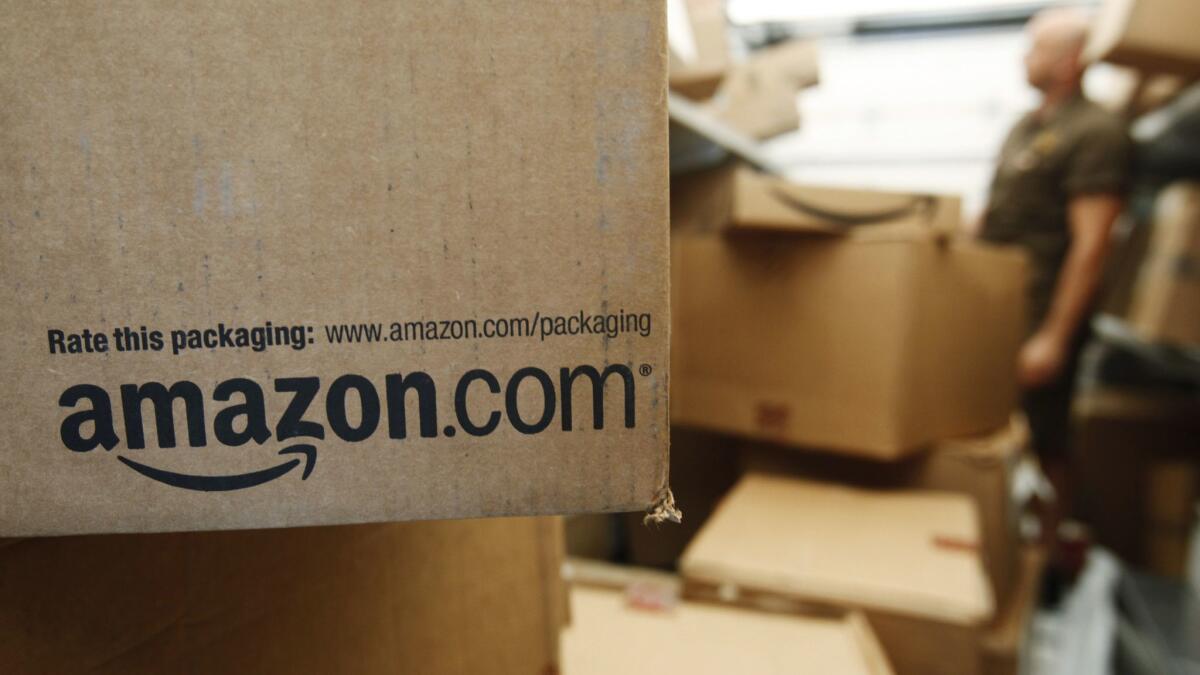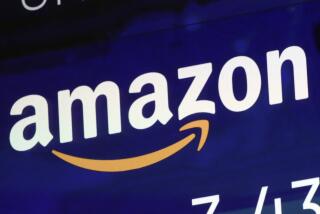Amazon will expand one-day delivery for Prime customers

Amazon.com Inc. will spend $800 million in the current quarter to reduce delivery times for Prime customers to one day, from two, trying to revive its main e-commerce franchise and ward off greater competition.
The announcement came after the online retailer Thursday reported first-quarter profit that exceeded analysts’ estimates, demonstrating the company’s focus on cloud-computing, advertising and other high-margin businesses continues to pay off.
Amazon’s chief financial officer, Brian Olsavsky, later put the attention back on Amazon Prime, the subscription program that helped make the company the world’s largest online retailer. Amazon charges Prime customers monthly and annual fees — typically $119 in the U.S. — in exchange for shipping discounts and access to music and video programming. It offers free two-day delivery on many items.
That benefit is less of a draw now than when it was first launched in 2005. Established retailers and startups have closed the gap on Amazon’s offer of convenience. Walmart Inc. is delivering from its giant store network, as well as enticing people to order items online and pick up in stores. Over the holiday shopping season, Target Corp. made waves by scrapping minimum order sizes to qualify for free shipping.
Amazon’s news bolstered its shares on Wall Street, sending them up 2.5% to $1,950.63 on Friday. At the same time, shares of Target and Walmart fell 5.7% and 1.9%, respectively.
“To the extent it is able to fulfill this promise or, at least, the perception it is able to do, it will place a lot of pressure on the competition, most of which is still trying to ramp its 2-day efforts,” analysts at D.A. Davidson wrote in a note to investors.
An analyst said Friday that Walmart could easily match Amazon’s one-day delivery gambit. “One day shipping is neither shocking nor difficult for retailers at scale,” Brandon Fletcher, an analyst at Sanford Bernstein, said in a note.
Fletcher, who previously worked in Walmart’s strategy and operations departments, said the retailer’s existing network of 156 distribution centers, combined with the fact that much of the U.S. population is concentrated in urban areas, means that it wouldn’t require much investment to build out a one-day service. He cited previous research conducted by consultants A.T. Kearney that showed Walmart could get to one-day shipping with only eight additional distribution facilities.
Walmart has offered free two-day shipping on orders of $35 or more since early 2017, helping it keep pace with Amazon, which accounts for about half of all e-commerce spending in the U.S. The $35 threshold has been adopted by other retailers as well, in order to offset the delivery costs.
Amazon’s e-commerce business saw unit sales grow 10% during the first three months of the year. That was the lowest ever. Total revenue increased 17%, the first year-over-year gain of less than 20% in a quarter since early 2015. Olsavsky said faster delivery times will increase the number and types of products customers are willing to buy from Amazon.
“We really think it’s going to be groundbreaking for Prime customers,” he said on a conference call after the results were released. “We have the capability because we’ve been at this for more than 20 years.”
Olsavsky didn’t offer a timeline for the project’s rollout, which will begin in the U.S., saying, “We expect to make steady progress quickly and through the year.” He also didn’t outline the extra ongoing costs Amazon will bear to take the program global.
Recently, the company started encouraging Prime members to group their orders for delivery on a single day. That helps Amazon consolidate shipping — and, if customers follow through — may hold down the cost of the new one-day pledge.
Amazon kept a lid on delivery costs in the period that ended March 31, spending $7.3 billion in the quarter. That’s a gain of 21% from a year earlier, but well below the pace of the increases in recent years.
Still, expenses related to the new Prime perk, and the suggestion of more to come in a profit forecast that fell short of estimates, contributed a dour note in Amazon’s otherwise upbeat earnings.
First-quarter earnings were $7.09 a share, the Seattle company said. Analysts had projected $4.67 a share. Sales were $59.7 billion, compared with $51 billion in the period a year earlier — in line with the average estimate of analysts compiled by Bloomberg.
Day, Soper and Boyle write for Bloomberg
More to Read
Inside the business of entertainment
The Wide Shot brings you news, analysis and insights on everything from streaming wars to production — and what it all means for the future.
You may occasionally receive promotional content from the Los Angeles Times.









